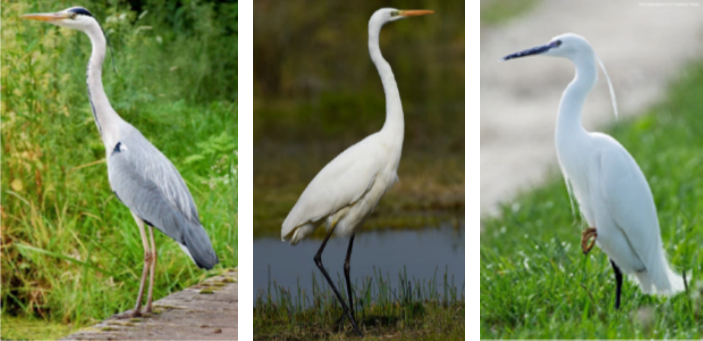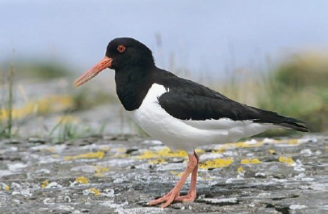
HERONS – AIRONI
Herons are wader. So they have got a long neck, long legs and a short tail not to get wet while they stay in the water waiting for something to eat. In fact they wait for their prey and when it passes they quickly grasp it. They eat fish but also insects, frogs, mice and reptiles. When they fly, they bend the neck.
Gli aironi sono trampolieri. Hanno un collo lungo, zampe lunghe e una coda corta per non bagnarsi mentre stanno nell’acqua aspettando di mangiare qualcosa.
Essi, infatti, aspettano che passi una preda per afferrarla. Mangiano pesci, ma anche insetti, rane, topolini e rettili
There are different species of herons. The most frequently ones are: the gray heron, the great white heron, the egret.
Ci sono diverse specie di aironi. I più conosciuti sono: l’airone cenerino, l’airone bianco e la garzetta.
THE GRAY HERON – L’AIRONE CENERINO
It is tall and thin. It has got greyish feathers and it has got a massive orange beak and orange legs.
E’ alto e magro. Ha piume grigiastre, un robusto becco arancione e zampe arancione
THE GREAT WHITE HERON – L’AIRONE BIANCO
It has got a completely white plumage, a yellow beak and black legs.
Ha un piumaggio completamente bianco, il becco giallo e zampe nere.
THE EGRET – LA GARZETTA
It is very similar to the great white heron, but it is smaller.
E’ molto simile all’airone bianco, ma è più piccola.
 OYSTERCATCHER – BECCACCIA DI MARE
OYSTERCATCHER – BECCACCIA DI MARE
It has got a white body, black head and wings and a strong beak used to break oysters. That’s why it is called “oystercathcer”. It is a rare species nesting on the coast. During the migrations it stops in wetlands.
Ha il corpo bianco, la testa e le ali nere e un becco robusto per rompere le ostriche .
Per questo è chiamato l’ostrichiere. E’ una specie r ara che nidifica sulla costa e, durante la migrazione, si ferma nelle zone umide.

SEAGULLS – I GABBIANI
There are a lot of seagulls in the Comacchio Lagoon.
There are different species of seagull which take on different characteristics according to the season and the age. In winter, they are very similar; in summer the differences are clearly visible.
Ci sono molti gabbiani nelle valli di Comacchio. Ci sono diverse specie che assumono diverse caratteristiche a seconda dell’età e della stagione. In inverno sono molto simili, mentre in estate la differenza è chiaramente visibile.
The COMMON SEAGULL has got dark red legs and a black head , especially in summer, during the love period.
Il gabbiano comune ha zampe rosso scuro e testa nera, specialmente in estate, durante il periodo degli amori.
The HERRING GULL is the biggest of the seagull. It is white with grey and black wings; the beak is yellow with a red spot and the feet are completely yellow.
Il gabbiano reale è il più grande. E’ bianco con le ali grigie e nere; il becco è giallo con una macchia rossa e le zampe sono completamente gialle.
The MEDITERRANEAN GULL has got a black head, orange legs and an orange beak with a yellow tip.
Il gabbiano mediterraneo ha la testa nera, zampe e arancioni e becco sempre arancione con un puntino giallo.
The PINK SEAGULL is mainly white but in summer it becomes rosy because it feeds on shrimps and chironomids.
Il gabbiano corallino è principalmente bianco, ma diventa roseo perché si nutre di gamberetti e chironomidi.
Every kind of seagull is honnivorus. They eat even the eggs of other birds.
Tutti i gabbiani sono onnivori; si nutrono persino delle uova di altri uccelli
